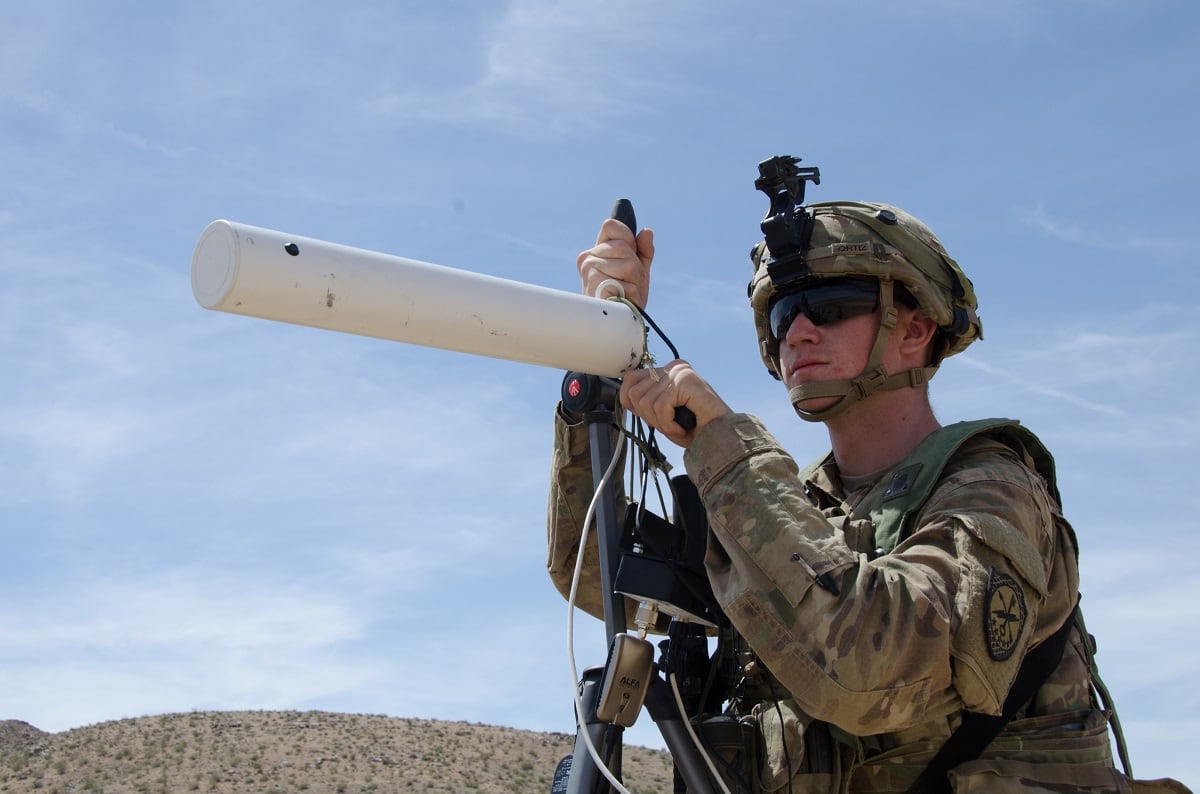The Army’s Cyber Blitz experiment held in New Jersey this month was the first opportunity for a newly created Intelligence, Information, Cyber, Electronic Warfare and Space (I2CEWS) detachment to test equipment and concepts for multidomain battle.
The detachment, which are often described as the brain of the Army’s Multidomain Task Force, was formally created in January.
Cyber Blitz was also conducted in conjunction with Orient Shield in Japan linking forces and operations with Army forces in Japan, Japanese defense forces and I2CEWS forces dispersed between the Pacific and New Jersey where the exercise was physically located.
At the experiment, “they had capabilities operating across the entire electromagnetic spectrum, from [electronic warfare] EW attack, EW surveillance as well as defensive, offensive cyber as well as space control assets,” Col. Tony Crawford, chief of strategy and innovation and director of futures at Army Pacific, told reporters at the annual Association of the U.S. Army conference.
“They were able to play with all sorts of assets that the Cyber Center of Excellence, the Intel Center of Excellence, all the centers of excellence sent to Cyber Blitz and said ‘experiment with this equipment,’ tell us if it’s expeditionary and tell us if it’s going to be something you think we would want to field to the I2CEWS.”
One example was the Electronic Warfare Planning and Management Tool (EWPMT). Forces in the Pacific linked with forces in New Jersey to pass information back and forth using the tool.
“The intent of the I2CEWS is to give that commander on the ground the ability, if paired with the proper authorities, to execute offensive, defensive cyber operations,” Crawford said. “We put these guys forward and operations and they may not be able to communicate for a while so they have to go with preexisting authorities and pre-scripted mission assignments, if you will, that they can execute if this happens, than this can occur, you have the authority to do this. You have to kind of be in the [area of operations] in order to do that.”
These teams will help to shape the operational environment, monitor information streams such as social media, conduct information operations or cyber missions and prepare for war if a conflict were to break out.
“We wanted to put it in an environment that would replicate how there would be some level of crisis and they would have to ramp up maybe stand the competition, maybe transition to phase 1 of an actual conflict where shots are being fired and then go back,” Maj. Gen. Neil Hersey, commander of the Army Cyber Center of Excellence and Fort Gordon, told reporters at AUSA. “Not waiting for a crisis to come up to turn your systems on or ask for capability, they’ve got it. Ideally … a commander is not surprised by what’s going on in their area and has the ability to potentially do something non-lethal that would avoid an armed conflict with a capability they haven’t have before.”
Because the detachment doesn’t have the right personnel to conduct offensive cyber operations yet, Cyber Blitz took some liberties in creating a testing environment.
“We tested the authorities that one thinks they would need in 2025-2028 versus the authorities we have today,” Richard Wittstruck, associate director for field based experimentation and integration at the Army Combat Capabilities Development Command's Command, Control, Communication, Computers, Cyber, Intelligence Surveillance and Reconnaissance Center. “That’s the beauty of having an experiment integrated into the exercise – we can take some more liberty under the label of experimentation to try out new procedures and new processes and say let’s assume for a minute that you had this authority, how would you execute that in an operation.”
One of the takeaways for leaders was that even with a fair amount of latitude, operations took more time than originally anticipated.
“We learned some things that we thought you could it overnight and it took two or three days to gain access to a target in an experiment closed form,” Wittstruck said. “In a real-world operation, it could take weeks, months or even years to gain access. Those are things that we continued to teach ourselves again and again that our persistent and patient tactical patience, if you will, is required in order to get those kind of target sets. You’re not going to prosecute them in a matter of hours unless the conditions have already been set weeks and months and possibly years in advance.”
Meanwhile, Cyber Blitz/Orient Shield also marked the first-time joint Japan-U.S. defensive cyber operations were conducted.
Teams also tested information operations.
Maj. Gen. Viet Luong, commander of Army Japan, said the Multidomain Task Force succeeded in finding target sets to influence, disrupt or delay adversaries’ messaging.
Information operations can help commanders visualize their environment.
“Being able to dispute and punch back on fake news and influence operations that are coming in to disrupt our own command and control, being able to see that coming in and being able to counter it and get the truth out quicker than the enemy can,” Hersey said.
Mark Pomerleau is a reporter for C4ISRNET, covering information warfare and cyberspace.








